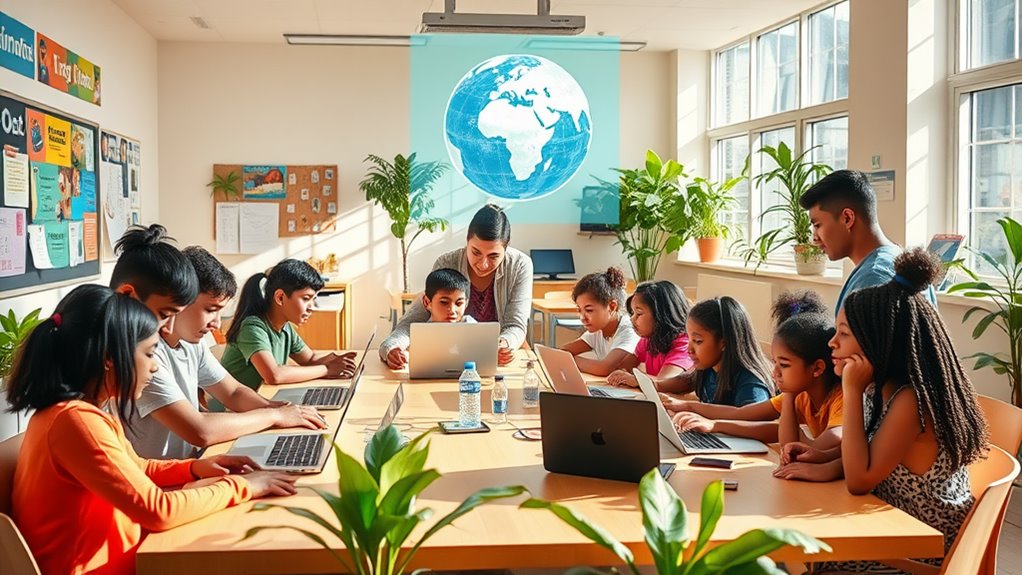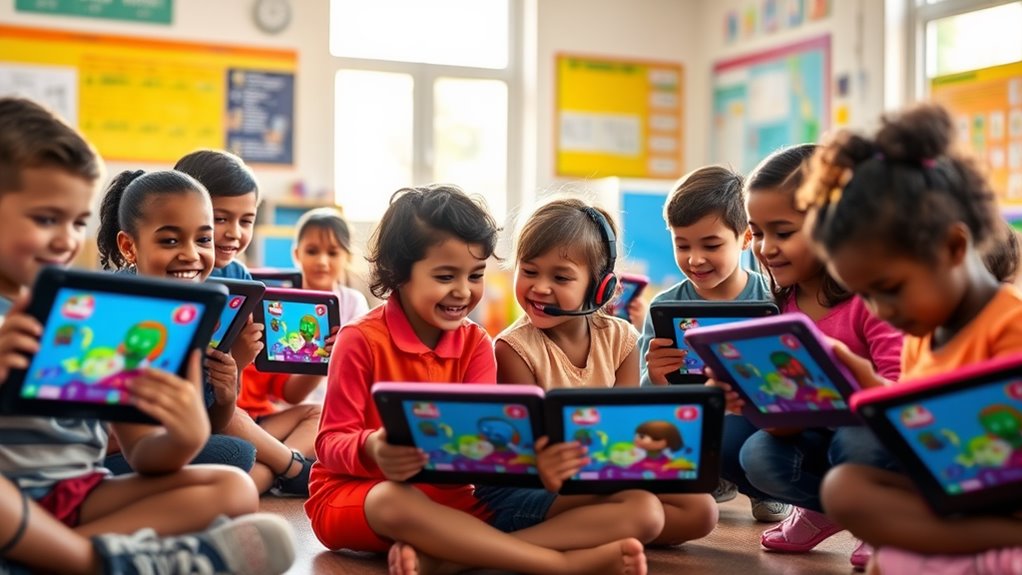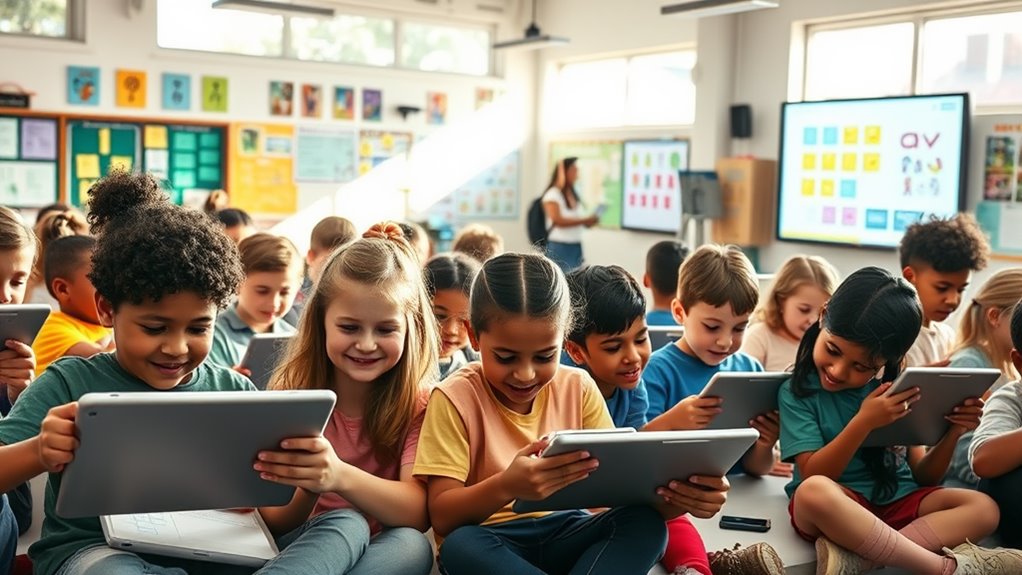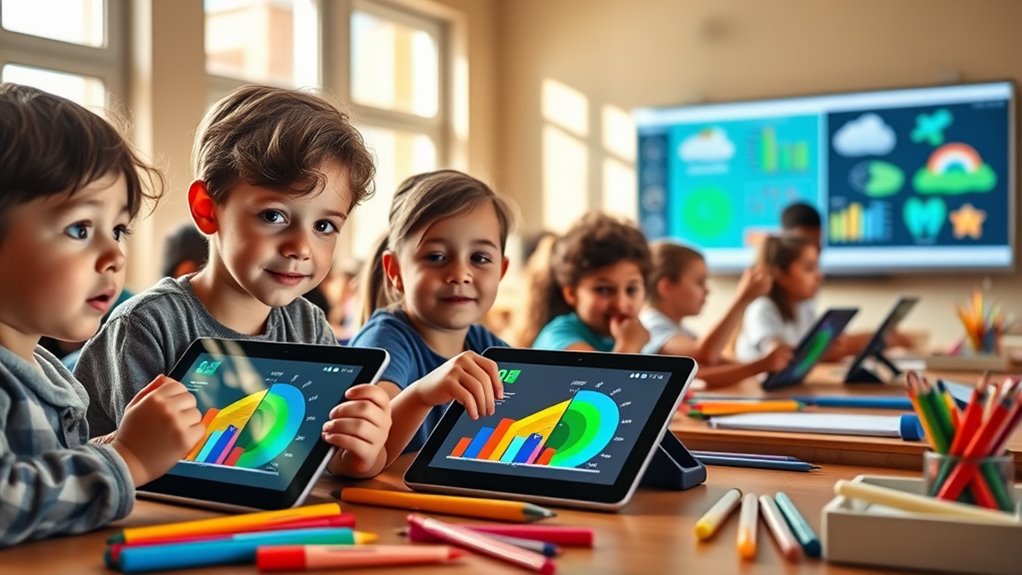Top 5 Tech Tools Every Parent Needs for Remote Learning
To navigate remote learning successfully, you need the right tech tools. Start with video conferencing platforms for clear communication between you and teachers. Next, a learning management system can organize all your child’s resources in one place, making it easy to track progress. Digital collaboration tools help foster teamwork, while interactive educational apps make learning fun and engaging. Don’t forget productivity and organization software to keep assignments on track and ensure deadlines aren’t missed. These tools can transform your child’s online education experience, and there’s more valuable information that can make a difference just ahead.
Key Takeaways
-
Video Conferencing Platforms: Essential for effective communication between teachers and students, providing features like screen sharing and breakout rooms for enhanced collaboration.
-
Learning Management Systems (LMS): Centralize learning materials, track student progress, and simplify communication regarding assignments and deadlines in one accessible platform.
-
Digital Collaboration Tools: Facilitate real-time feedback and document sharing, promoting teamwork and enhancing accountability among students during group projects.
-
Interactive Educational Apps: Engage students with dynamic learning experiences through quizzes and games, aligning with their interests to boost motivation.
-
Productivity and Organization Software: Help parents and students manage assignments efficiently with task management tools and calendar synchronization for tracking deadlines.
Video Conferencing Platforms
When it comes to remote learning, video conferencing platforms are essential tools that bridge the gap between teachers and students. You’ll find that these platforms provide a virtual classroom experience, making it easier for everyone to stay connected.
One of the key aspects you should consider is video quality. A clear, high-definition video feed ensures that you can see and hear the instructor without straining. Poor video quality can lead to misunderstandings and make learning challenging.
Another important factor is the user interface. A straightforward, intuitive user interface can make all the difference. If the platform’s layout is complicated, it can be frustrating for both students and teachers. You want something that allows for easy navigation, enabling you to focus on the lesson rather than fumbling with buttons and settings.
Additionally, many platforms offer features like screen sharing and breakout rooms, which enhance collaboration.
Learning Management Systems
How can Learning Management Systems (LMS) transform the remote learning experience? An LMS can be a game-changer for you and your child by organizing all learning materials in one accessible platform.
With an LMS, you can track your child’s progress through learning analytics, allowing you to see where they excel and where they might need extra help. This data empowers you to make informed decisions about their education.
Course customization is another fantastic feature. You can tailor lessons to fit your child’s unique learning style and pace, ensuring they stay engaged and motivated. Imagine being able to adjust assignments based on their interests or abilities; that’s what an LMS offers.
It also simplifies communication with teachers, making it easy for you to stay updated on assignments and deadlines.
Additionally, many LMS platforms integrate with other educational tools, creating a seamless learning environment. This means your child can access videos, quizzes, and forums without jumping between different applications.
Digital Collaboration Tools
Digital collaboration tools are essential for enhancing remote learning experiences. They allow you and your child to engage in discussions and projects seamlessly, fostering a sense of community even from afar.
With these tools, real-time feedback becomes a reality. Your child can share their work and receive immediate input from teachers and peers, helping them improve and learn more effectively.
Platforms like Google Workspace or Microsoft Teams not only facilitate document sharing but also enable collaborative brainstorming sessions. Imagine your child working on a group project, bouncing ideas off classmates in a shared document while chatting in real time.
This kind of interaction can significantly boost creativity and problem-solving skills.
Moreover, using digital collaboration tools promotes accountability, as team members can easily track contributions and progress. You can encourage your child to take ownership of their learning by engaging with these platforms, helping them develop essential skills for the future.
Interactive Educational Apps
As collaboration tools enhance communication, interactive educational apps take engagement to the next level. These apps offer a dynamic way for your child to learn while having fun, making remote learning less of a chore and more of an adventure.
With features like interactive quizzes, your child can test their knowledge in real time, receiving instant feedback that helps reinforce their learning.
Educational games are another fantastic element of these apps. They transform traditional subjects into exciting challenges, allowing your child to explore concepts in a playful environment. This gamified approach not only keeps kids motivated but also encourages them to think critically and problem-solve, skills that are essential for their academic journey.
When selecting interactive educational apps, look for those that align with your child’s interests and learning goals. This way, they’ll stay engaged and eager to learn.
Plus, many of these apps incorporate social features, enabling your child to connect with peers and collaborate on tasks, further enriching their learning experience. By integrating these tools into your remote learning routine, you’ll create a more effective and enjoyable educational environment for your child.
Productivity and Organization Software
Productivity and organization software can be game-changers in a remote learning environment. As a parent, you know how vital it’s to keep everything organized, especially when juggling multiple subjects and assignments. Task management tools can help you and your child prioritize tasks, set deadlines, and track progress. Apps like Trello or Todoist allow for easy categorization of assignments, ensuring nothing slips through the cracks.
Additionally, calendar synchronization is crucial for staying on top of schedules. Tools like Google Calendar can integrate with task management apps, allowing you to see upcoming deadlines and class schedules in one place. You can set reminders for important dates, ensuring your child is prepared and on time.
Moreover, these tools often come with features that allow for shared access. This means you can collaborate with your child, checking in on their progress and providing support when needed.
Frequently Asked Questions
How Can I Ensure My Child Stays Focused During Online Classes?
To ensure your child’s focus during online classes, create a distraction-free environment and implement time management strategies. Set specific study times, minimize interruptions, and encourage breaks to help maintain their concentration and productivity.
What Should I Do if My Child Struggles With Technology?
If your child’s facing technology anxiety, don’t panic. Start by identifying specific struggles, then gradually introduce skill development activities. With patience and encouragement, you’ll both unlock their potential, transforming frustration into newfound confidence and competence.
How Can I Monitor My Child’s Screen Time Effectively?
To monitor your child’s screen time effectively, set up parental controls on their devices. Regularly review screen time reports and encourage open conversations about their online activities, ensuring a balanced approach to technology use.
Are There Any Free Tools for Remote Learning?
Yes, there are plenty of free online resources and educational apps available. You can explore platforms like Khan Academy, Duolingo, and Google Classroom to support your child’s learning journey without spending a dime.
How Can I Support My Child’s Socialization During Remote Learning?
Socialization during remote learning can feel like a ship adrift. You can anchor your child by organizing virtual playdates and encouraging them to join online groups, fostering connections that bridge the distance and build friendships.





